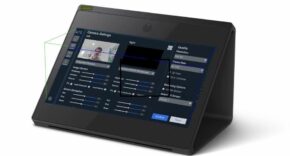
Across the country, the Local Health and Care Records programme has already seen the rollout of integrated care records in regions of the UK. In the autumn of last year, Matthew Gould, CEO of NHSX, tasked the remainder of the country’s STPs and ICSs to get their shared care record systems in place by September 2021.
There is no doubt shared care records will have a number of benefits for clinicians, carers and patients alike. However, the implementation of these systems across a number of individual organisations isn’t without its challenges. So where do health and social care organisations begin?
- Putting user needs first
When first briefed to deliver an integrated care record, it’s easy to focus on the technicalities. It is, after all, a technical solution. But it’s important for the whole design to start by considering what the users need, and then align the technical spec to meet those needs.
From experience working on the Kent & Medway Care Record, the best way to understand user needs is to establish a Clinical & Professional Reference Group that brings together frontline health and social care workers from NHS and local authority organisations. Here you can learn what information they need about their patients, and what would help them make an informed decision as quickly as possible. This will aid a better understanding of the information that would help these professionals to deliver better experiences and outcomes for the individuals in their care.
- Establishing a governance structure
From the outset of a shared care record project, a robust governance structure needs to be established. This should remain in place until the solution is fully deployed, with tweaks made at each phase. The governance structure should include a clinical and professional group, a technical group, and a project board, with a broad representation of people from across the entire health and social care ecosystem.
During the building of a detailed technical specification, it’s important to undertake extensive market engagement by inviting suppliers in the space to showcase what they can deliver in this area. From this insight, it will be easier to align the specification to what is available in the market.
At the completion of this phase, a thorough understanding of the needs and requirements can be pulled together, and a detailed technical specification can be taken through to procurement.
Once the technical specification is prepared, it’s time to go to market to procure the solution. It’s important to stay flexible with routes to market when procuring a shared care record solution. Being flexible with the route can save time, effort, and money in the long term.
- A transformation enabler, not an IT solution
The procurement of an integrated care record should not be considered a purchase of an IT solution. IT teams of course need to be involved, and their input is critical, but a shared care record is not just about an IT solution. It’s a transformation enabler for the integration of shared data. A shared care record is also often not a replacement system. It needs to be fully integrated within an organisation’s existing clinical systems and add an additional dimension to these systems. It’s important that this is understood by all parties from the start. Often, when health and social care staff hear about a shared care record coming down the line, their first response is “But what about our existing system? Do I now need to learn another one? Which one should I refer to?” A shared care record sits within existing systems and does not replace what staff already use.
- Engagement with professionals and the public
Engagement with health and social care professionals throughout the procurement process is vital. We recommend facilitating an environment where health and social care professionals are encouraged to actively engage with suppliers. This can include looking at, trialling, and participating in demonstrations of systems to give end users a tangible feel of the platforms available.
The views of patients and the public are also essential during this phase, particularly if the intention is to have a patient portal through which patients can access their own records. By establishing patient review groups and actively involving them in the procurement process and in discussions with the supplier, organisations can gain valuable insight into the opinions of the public, which can be included in the solution design.
- Looking ahead to full mobilisation
Whilst the procurement work is being undertaken, it’s beneficial to prepare for the phase ahead – mobilisation. This includes planning for the often lengthy time required for the approval processes within the NHS, and ensuring budgets are agreed in advance. Everyone involved needs to be fully geared up for this resource-heavy phase. Each organisation needs to prepare their budget and resource allocation for the next phase appropriately. Throughout all phases, maintaining the established governance structure will keep momentum and provide support on local approval processes.
To coordinate and facilitate the complexities of local data migration and implementation, a central project team should be established, with central workstream leads. A core project team with seasoned professionals in project management, information governance, clinical safety, communications and engagement and benefits realisation can work closely with their counterparts in each organisation to effectively work through deployment plans.
The role of Information Governance (IG) cannot be underestimated when it comes to a shared care record. By establishing a central Project Team with an IG workstream, the central IG lead can work with the IG teams in individual organisations to ensure appropriate documentation and processes are prepared and approved. With a wealth of data being shared across numerous NHS and local authority organisations, the detail, due diligence, and dedication required at this part of the process is paramount.
During the final phase of delivering an integrated care record, there is a greater emphasis on individual organisations managing deployment locally. Each organisation needs to manage the integration of the patient data from their local system into the new shared care record and provide the appropriate resource in which to do this. With a wealth of data being shared across numerous NHS and local authority organisations, the detail, due diligence, and dedication required at this part of the process is paramount.
Reaping the rewards
Mobilisation is the exciting part of such a transformative project. This is where the fruits of many months of labour can at last be seen. As data starts to flow into the new integrated care record, the parties involved become increasingly excited by the possibilities that lay before them. With each new data feed, the solution comes to life and the life-changing and life-saving benefits become real.
Written by: Steve Whiting, Client Director, Health & Care at Cantium Business Solutions.











